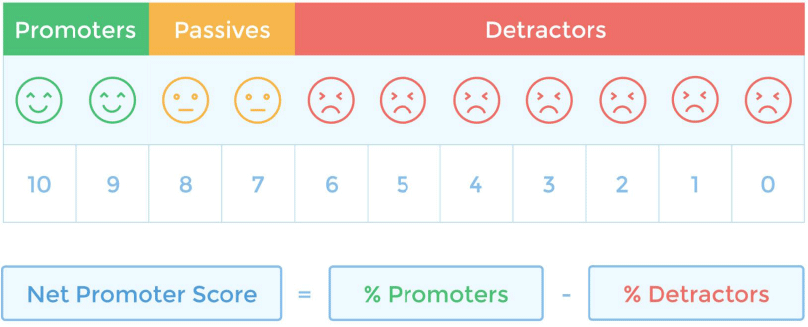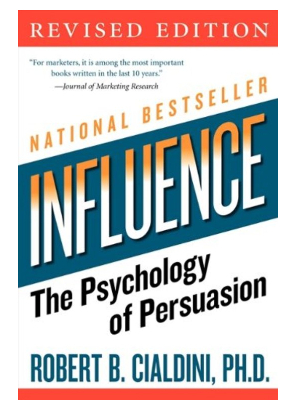How any phone system can explode company growth in just TWENTY seconds…
June 17, 2019
Strength and growth come only through continuous effort and struggle. – Napoleon Hill
Most organisations are constantly aiming to gain a competitive edge. This can translate to investing in technology, improving products or services, refining communications, striving for efficiencies or training and upskilling employees. All the "continuous effort and struggle" described by Napoleon Hill.
While there are no shortcuts, it turns out that just 20 seconds at the end of a phone call can make a HUGE impact on a company's bottom line.
Between 40-70% of customers, whether they're B2B or B2C, leave their supplier because they believe they don't really care about them. — Marketing Magazine
There are many ways to measure activities via KPI performance metrics, and ultimately, sales figures never lie. But, according to Marketing Magazine, customer experience is the main differentiator between a customer staying loyal or leaving to buy from your competition.
So, if you want a customer to stay loyal to you, you must get THEM to say they're getting a great customer experience from you.
Here's how to do that and why it works so well…
Know The Score...
Firstly, you must have a way of measuring customer response.
We encourage the use of the Net Promoter Score®, or NPS®, which is based on the fundamental perspective that every company's customers can be divided into three categories: Promoters, Passives, and Detractors.
By asking one simple question — How likely is it that you would recommend [your company] to a friend or colleague? — you can track these groups and get an insightful measure of your company's performance through your customers' eyes.
Promoters (score 9-10) are loyal enthusiasts who will keep buying and refer others, fuelling growth.
Passives (score 7-8) are satisfied, but unenthusiastic customers who are vulnerable to competitive offerings.
Detractors (score 0-6) are unhappy customers who can damage your brand and impede growth through negative word-of-mouth.
To calculate your company's NPS®, take the percentage of customers who are Promoters and subtract the percentage who are Detractors.
What you ask and the way you ask it are VITAL
To maximise your company growth, we recommend you ask TWO questions at the end of each call.
Before we get to the two questions, you should note it's critical for the agent to introduce the automated phone survey in the right way.
Once the agent has finished serving the customer with their query, the agent should wrap up the call by asking, "Is there anything else I can help you with today?"
Once the customer confirms there's nothing else the agent should ask, "Would you mind spending 20 seconds answering two simple questions in an anonymous phone survey on how well I served you today?"
There's some powerful psychology at play here...
First of all, you should never underestimate the power of reciprocity. Indeed, it's one of the 6 principles of persuasion detailed in famed psychologist Robert Cialdini's book, "Influence." The agent has served the customer and is now making a reciprocal request for just 20 seconds, answering two simple questions. There is a strong likelihood the customer will comply with this request.
Secondly, the word "anonymous" means the customer knows there are no potential downsides to them answering truthfully. This seems a small point, but as well as putting the customer at ease, it also makes them feel that the company cares about their answers AND their ongoing relationship.
Both points serve to strengthen the customer experience.
Here are the two questions…
- How happy are you with the person you spoke with on your call today?
- How likely would you be to recommend [your company] to a friend or colleague?
The first question is designed to anchor a positive call experience and cement the relationship that just happened between the agent and the customer.
Once the customer has provided a positive response to the first question, you now ask them how likely they are to recommend your company.
The truth is that most customers haven't really put much thought into this question before you ask them. But if they've just been served appropriately, have responded to the agent's request to answer the two quick questions, have given a positive response to the first question and then are asked if they would recommend, the chances of them providing another positive answer increases significantly.
Hang on a second...
...haven't we just manipulated the customer's answer to be more positive than it might have been if we had simply asked the question outright in the first place?
Yes, we have.
And for a good reason.
Anyone in sales knows that if they say something to a customer, then the customer can doubt it. But if a customer says something, then it must be true. This is classic confirmation or consistency bias at work.
Once the customer answers that they are more likely to recommend you to a friend or colleague, they are actually more likely to do so because of confirmation bias.
Happy employees lead to happy customers, which leads to more profits. – Vaughn Aust, EVP of Integrated Solutions, MarketStar
There's even more of an upside to implementing this type of survey in your business. Your employees will know the customers they serve will be asked how happy they were with the call. This will naturally compel your agents to try and serve your customers as best they can. Exactly what you want them to do, right? And when they get the feedback on how delighted the customers were, they'll feel happier about their work.
"Happy employees lead to happy customers," and so the self-fulfilling cycle continues.
Simple but extremely powerful…
Our CySurvey module does everything I just described — plus a little bit more…
It's quick to get set up and easy to run reports and get the feedback you need.
And we also include the ability to create rules to handle or escalate those callers that leave responses you want to be followed up.
To learn more, simply get in touch using your preferred method below…





